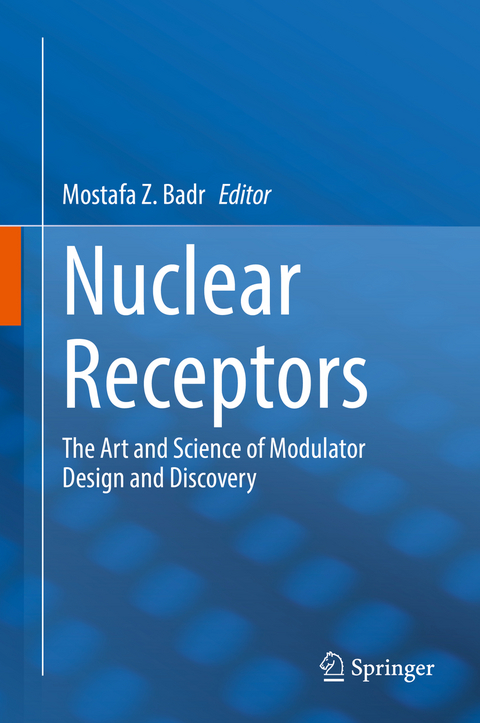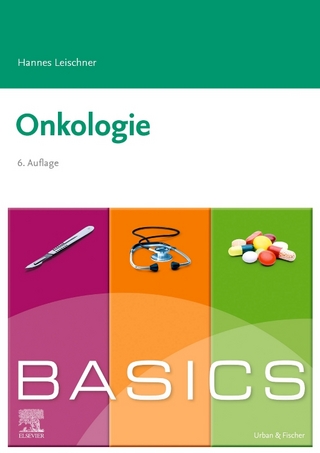
Nuclear Receptors
Springer International Publishing (Verlag)
978-3-030-78314-3 (ISBN)
This book will shed light on and emphasize intricate processes involved in designing as well as discovering physiological and pharmacological modulators of these important proteins. World-renowned scientists will share with the reader their professional expertise and extensive experience acquired through decades working with nuclear receptors. Chapters address the various means and consequences of modulating nuclear receptor activity will be presented and discussed. These modulators cover a wide span of moieties ranging from synthetic chemicals to natural products. In addition, the classification of these chemicals ranges from pan agonists to selective agonists and inverse agonists to antagonists. They also include proteolytic means to obliterate the receptor in the event that modulating its activity through canonical pharmacological agents becomes less effective and/or less desirable due to anticipated or experienced toxicities. Modulation of receptor activity may also take place in the absence of a ligand or through manipulating the structure of the receptor itself by controlling posttranslational events.
lt;p>Dr. Mostafa Z. Badr is a Professor Emeritus at the University of Missouri-Kansas City, USA. Dr. Badr obtained his Bachelor degree in Pharmacy and a Master's degree in Organic Chemistry from the Faculty of Pharmacy, Cairo University, Egypt. Dr. Badr subsequently obtained a Ph.D. Degree in Pharmacology and Toxicology from the University of Louisville, after which he received postdoctoral training in Toxicology at the University of North Carolina-Chapel Hill. In 1987 Dr. Badr accepted the position of Assistant Professor at the University of Missouri-Kansas City School of Pharmacy, where he retired as Professor in 2015.
Dr. Badr has authored and co-authored over 70 publications in peer-reviewed journals, and has published three previous books with Springer Nature. Dr. Badr founded the journal of PPAR Research and served as its Editor-in-Chief from 2005-2011, and the journal of Nuclear Receptor Research and served as its Editor-in-Chief from 2013 until 2019.
Mostafa Badr, Ph.D.
Kansas City, MO, USA
November 2020.
1. Molecular Pharmacology of the Youngest Member of the Nuclear Receptor Family: The Mineralocorticoid Receptor.- 2. A Simple Method for Visual Assessment and Quantification of Altered Subcellular Localization of Nuclear Receptors.- 3. Multifaceted Effects of Ligand on Nuclear Receptor Mobility.- 4. Chemical Considerations in Discovery of Receptor Modulators.- 5. Structure-Based Design of Estrogen-Related Receptors Modulators.- 6. PPAR and d ligand design - Honing the traditional empirical method with a more holistic overview.- 7. Pregnane X Receptor: understanding its function and activity at the molecular level.- 8. Ligand Design for the Vitamin D Receptor.- 9. What Makes a Good Antagonist: Lessons Learned from the Estrogen and Aryl Hydrocarbon Receptors.- 10. Design of Novel PPAR agonist for Neurodegenerative Disease.- 11. Functional bioassays lithograph ligand reflections in the PPARalpha sphere.- 12. Computational applications on Food Contact Chemicals as Nuclear Receptors binders.- 13. Alternation of Nuclear Hormone Receptor Signaling by Antiviral Drugs.- 14. Retinoic acid-related orphan receptor (ROR) inverse agonists: potential therapeutic strategies for multiple inflammatory diseases.- 15. Therapeutic Strategies to Target Activating Estrogen Receptor a Mutation.- 16. Androgen Receptors in the Pathology of Disease.- 17. Bilirubin: A Ligand of the PPAR Nuclear Receptor.- 18. Nuclear Receptor Ligands in Flavivirus Infection Control.- 19. Use of Nanotechnology to Improve 15d-PGJ2 Immunomodulatory Activities.- 20.Ligand-independent Activation of PPARs.- 21. PPAR Modulation Through Posttranslational Modification Control.- 22. Developing Inhibitors to the Amino-Terminus Domains of Steroid Hormone Receptors.- 23. Redirecting the cellular waste disposal machinery to target transcription.
| Erscheinungsdatum | 27.10.2021 |
|---|---|
| Zusatzinfo | XI, 679 p. 209 illus., 127 illus. in color. |
| Verlagsort | Cham |
| Sprache | englisch |
| Maße | 155 x 235 mm |
| Gewicht | 1196 g |
| Themenwelt | Medizin / Pharmazie ► Medizinische Fachgebiete ► Onkologie |
| Medizin / Pharmazie ► Pharmazie | |
| Medizin / Pharmazie ► Studium | |
| Naturwissenschaften ► Biologie ► Biochemie | |
| Schlagworte | androgen receptors • drug design • Infectious Diseases • Inflammatory Disease • Ligand • metabolic diseases • Molecular Pharmacology • neuropathy • Phytochemicals • PPAR • PXR • ROR inverse agonists • RXRalpha • RXR Phosphorylation • target transcription • Therapeutic Strategies • vitamin d receptor |
| ISBN-10 | 3-030-78314-6 / 3030783146 |
| ISBN-13 | 978-3-030-78314-3 / 9783030783143 |
| Zustand | Neuware |
| Haben Sie eine Frage zum Produkt? |
aus dem Bereich


